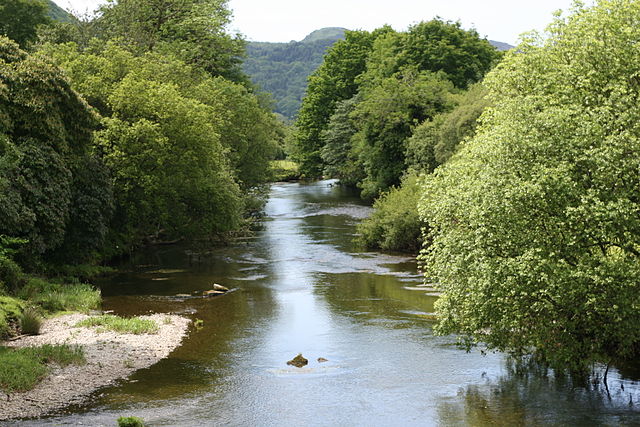The River Dwyryd, is a river in Gwynedd, Wales which flows principally westwards; draining to the sea into Tremadog Bay, south of Porthmadog.
The River Dwyryd at Maentwrog
Porthmadog, originally Portmadoc until 1974 and locally as "Port", is a coastal town and community in the Eifionydd area of Gwynedd, Wales, and the historic county of Caernarfonshire. It lies 5 miles (8 km) east of Criccieth, 11 miles (18 km) south-west of Blaenau Ffestiniog, 25 miles (40 km) north of Dolgellau and 20 miles (32 km) south of Caernarfon. The community population of 4,185 in the 2011 census was put at 4,134 in 2019. It grew in the 19th century as a port for local slate, but as the trade declined, it continued as a shopping and tourism centre, being close to Snowdonia National Park and the Ffestiniog Railway. The 1987 National Eisteddfod was held there. It includes nearby Borth-y-Gest, Morfa Bychan and Tremadog.
Porthmadog Harbour was developed to export slate
William Madocks built a sea wall, the Cob, to reclaim Traeth Mawr for agriculture.
Tremadog is a planned settlement built by William Madocks on land reclaimed from Traeth Mawr.
The Ffestiniog Railway, opened in 1836, was built to transport slate from Ffestiniog to the new port at Porthmadog.





